The Mil Mi-1 was first flown in 1948 and became the first Soviet helicopter in series production. It was exported to a large number of countries, with some 2600 eventually built.
The Finnish Air Force operated four Polish-built WSK PZL-Świdnik SM-1s 1961–1966. HK-1, preserved at the Finnish Aviation Museum in Vantaa, was a gift from Soviet premier Khruschev to the Finnish president Kekkonen on the latter’s 60th birthday. Finnish sources give the type as SM-1SZ, but all other references use the type number SM-1WSZ: it is a dual-control trainer, corresponding to the Soviet-built Mi-1U. It was operated by the Kuljetuslentolaivue (Transport squadron) at Utti air base.
Overview
All pictures can be expanded further by clicking on them.
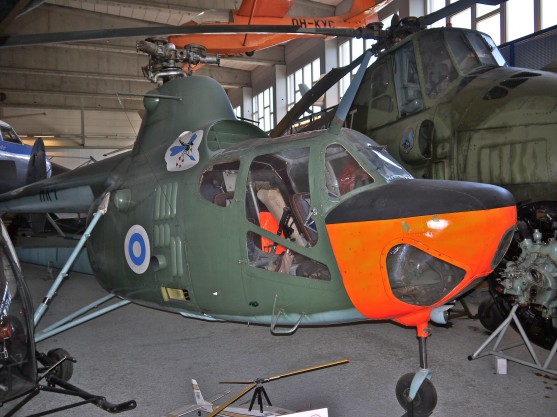
Mi-1 HK-1. The general colour scheme is Olive Green over DN Blue with the lower nose in Dayglo and the anti-dazzle panel on the top of the nose a very matt Black. The dayglo colour extends down the nose gear strut while the wheel fork and landing lamp cover are blue. The cockpit entry step seems to be Olive Green, but worn to show DN Blue underneath. There is a small green position light just behind the entry step. Several aerials are visible: A distinctive unicorn-horn antenna above the cockpit. While its attachment point is in Olive Green, the antenna itself is in DN Blue, except for a little bit at the bottom which is in natural wood grain. Two antenna posts are placed—in asymmetrical positions—on the rotor pylon. The starboard one is visible here, supporting a lead which enters the cockpit through an insulator. Thera are also several anntennæ on the tail rotor boom. By the nose we can see part of the LIT-3 (Polish-built Ivchenko AI-26V) seven-cylinder radial engine that powered the helicopter. In the background is a rather larger Mi-4.
Cockpit
The first models of Mi-1 had a pilot and two passengers. This version had dual controls, with the co-pilot sitting diagonally behind the pilot, which I believe is unique. Later models had a three-seat bench for the passengers.
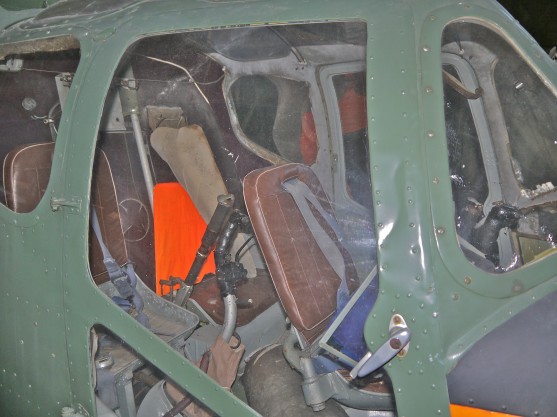
Note that the pilot and co-pilot have bucket seats with room for parachutes, while the passenger does not. However, I doubt parachutes would have been brought along in a helicopter, so it it’s a bit unclear why bucket seats were used. Maybe somebody had bought them in bulk.
Forward fuselage
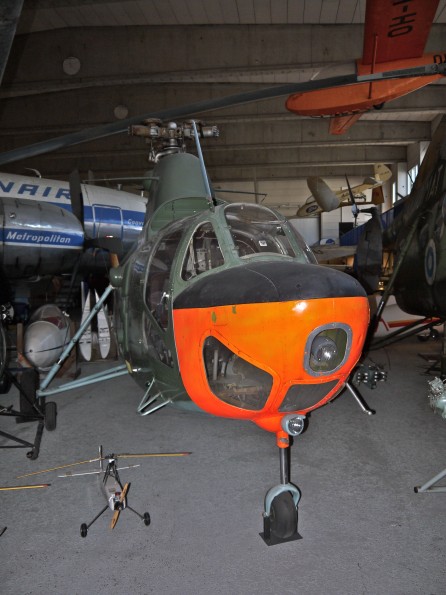
A good view of the landing lights. Note also the positioning of the antenna posts on the rotor pylon.
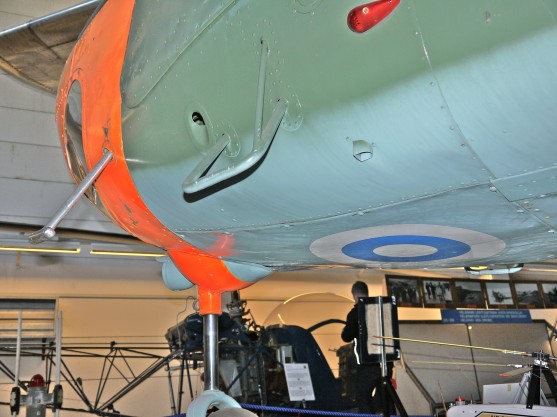
The underside of the cockpit. There is an outlet for…something, just ahead of the entry step. This does not seem to be matched by anything on the starboard side. There is another outlet behind and below the entry step. We can see that the Dayglo area ends inside the attachement bulge for the nose gear. We also see the red position light, corresponding to the green one on the starboard side. A Finnish roundel is underneath.
Landing gear
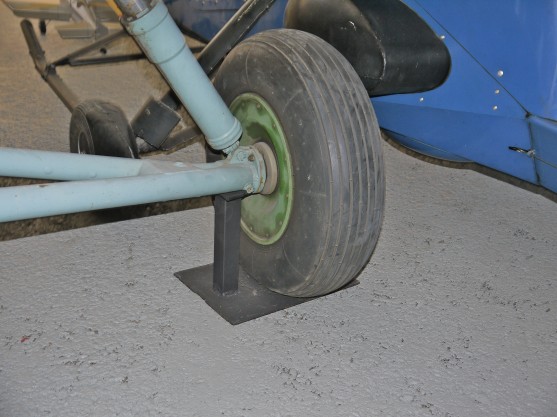
The starboard main wheel. The green of the hub is apparenty not Olive Green, but Soviet primer green.
Engine compartment
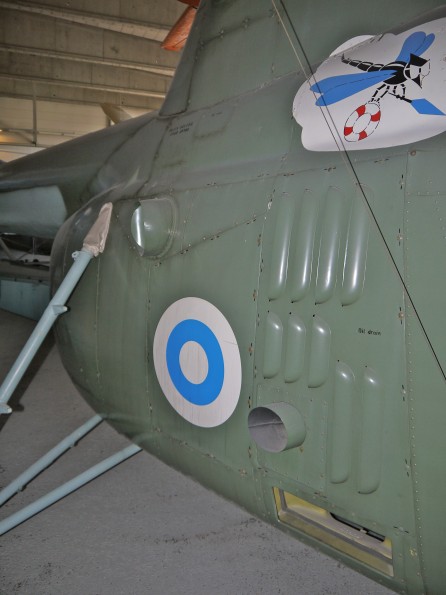
Exhaust pipe and louvres on the starboard side. At the top is the emblem of the helicopter flight: a dragonfly carrying a javelin and a life-buoy.
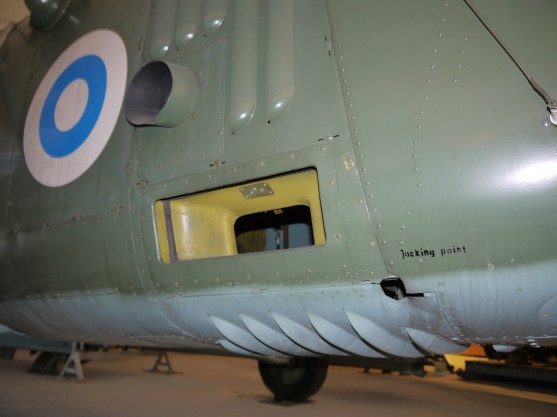
I do not know what this opening is. We see more louvres on the underside. Looking carefully, it seems as if the bottom panel is hinged and can be opened. Of particular interest is that the stencils (“Jacking point” here and “Oil drain” above) are in neither Russian, Polish, nor Finnish, but in English.

The cooling louvres on the port side gives us a view of the interior of the engine bay. Note also the canvas-covered attachment point of the main gear leg. Next to the attachment point is some kind of air intake.
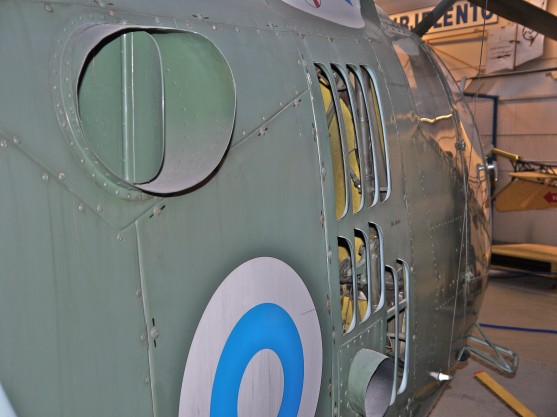
There is a corresponding intake on the starboard side, though this one seems to have a throttle. We also get another view inside the louvres. The interior colour is similar to Zinc Chromate Yellow.
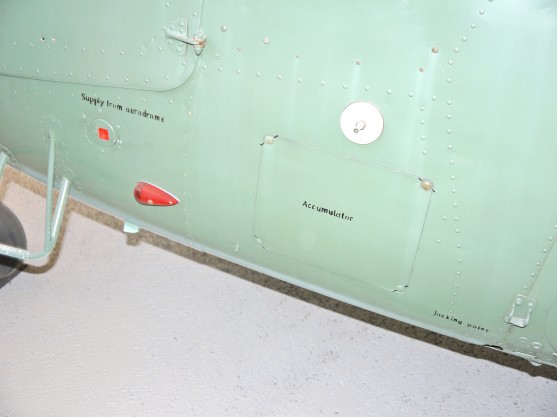
Some more stencils on the port side. I suspect the circular object is another insulated antenna connector, but the antenna lead on this side instead goes to a post on the tail boom.
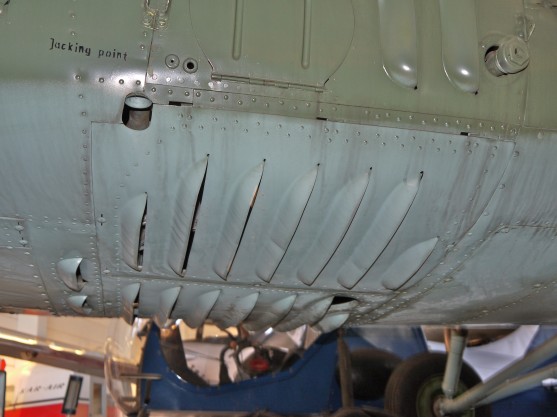
This view from the port side of the underside panel suggests it splits down the middle and can be opened to both sides.
Tail boom
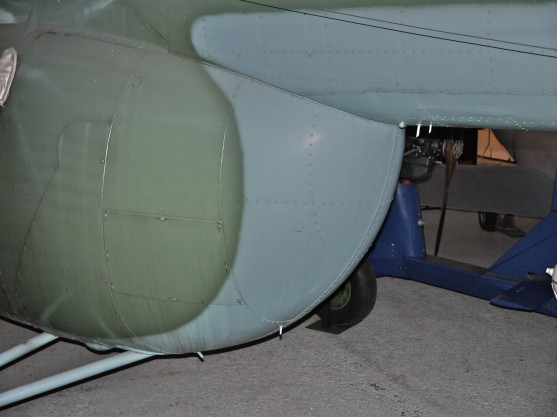
The cylindrical tail boom attaches to the ellipsoid fuselage. Note the curve of the camouflage border. There are some tiny pipes of unknown purpose protruding from both fuselage and tail boom.
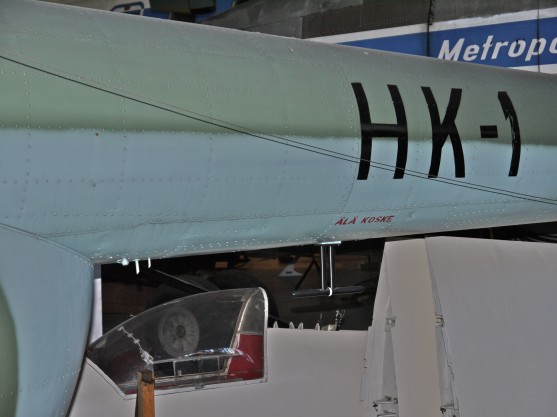
Further along the tail boom are some T-shaped antennæ of which this is the frontmost. They are sensitive enough that the message ”ÄLÄ KOSKE” (“DO NOT TOUCH”) is in Finnish. We also see the lead coming from the antenna post on the rotor pylon.
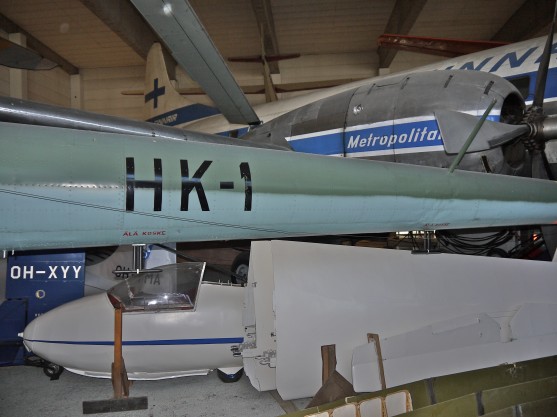
Now, here is something strange. That antenna lead from the front post should go to this aft post jutting out diagonally—this configuration is clearly visible on photographs, but at the museum the lead has just been pulled to a random strut further aft. We also see both T-antennæ on the underside.
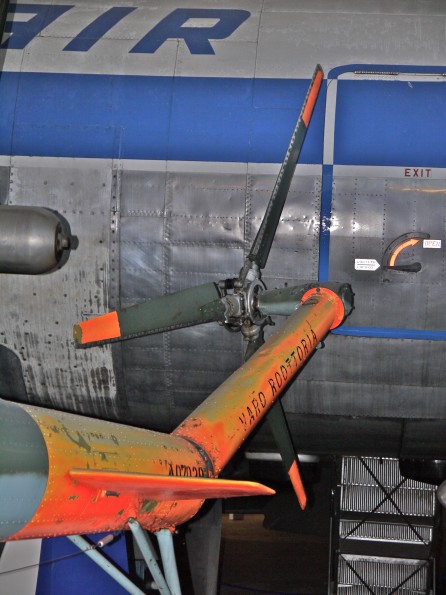
Here we see that misbegotten antenna attachment. The tail rotor area is rather grubby and worn, the base colour shining through the dayglo. ”VARO ROOTTORIA” (“BEWARE OF ROTOR”) is also important enough to be written in Finnish. There is also a serial number of some sort, but unfortunately I have no clear picture of it.
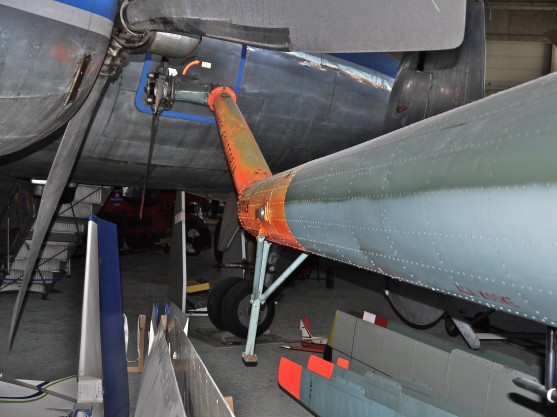
A good view of the tail strut arrangement. We also see that the warning stencils are present on both sides.
Main rotor
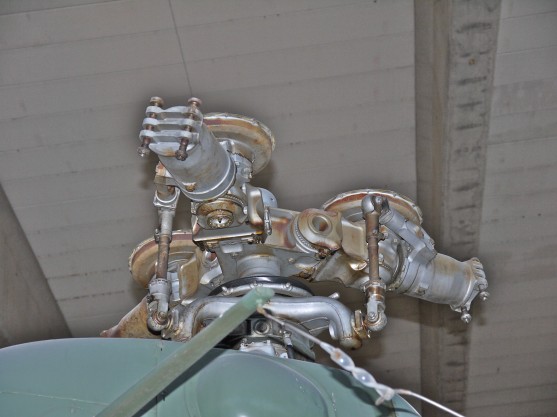
The rotor head, without blades. We also see the tip of the port-side antenna post with the lead going aftwards.
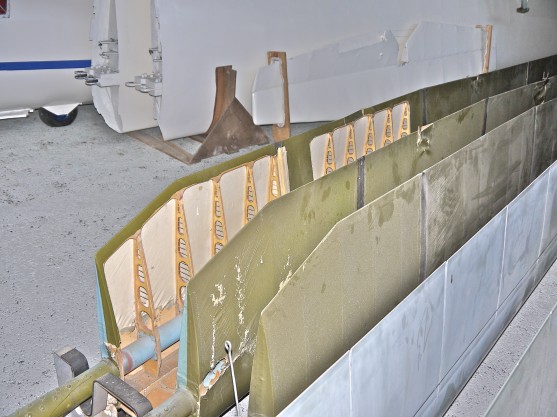
One of the rotor blades has been cut open to reveal that it is in fact a wood and canvas structure attached to a steel tube.
Available models
There are quite a few kittings of the Mi-1: A Model have produced several different versions in 1:72. Other offerings in 1:72 come from Gran Models and MPM. Special Hobby have produced a kit in 1:48.
Sources
- [Keskinen et al 1977]
- Suomen ilmavoimien lentokoneet 1939–72, Kalevi Keskinen, Kari Stenman & Klaus Niska, Tietoteos, 1977.
- [Keskinen & Stenman 1992]
- Suomen ilmavoimien lentokoneet 1918–1993, Kalevi Keskinen & Kari Stenman, AR-Kustannus Oy, 1992.
- [Munson 1969]
- Helicopters, Kenneth Munson, Blandford Press, 1969.
- [Němeček 1979]
- Vojenská letadla 4 – období 1945–1950, Václav Němeček, Naše Vojsko, 1979.
- [SIM]
- ”PZL SM-1SZ (Mil Mi-1U)”, Suomen Ilmailumuseo, n.d.
- [Taylor 1980]
- Jane’s Encyclopedia of Aviation, Michael J H Taylor (ed), Bracken Books, 1980.
- [Wikipedia]
- “Mil Mi-1”, Wikipedia, n.d.














